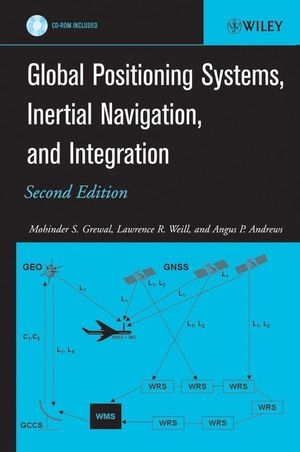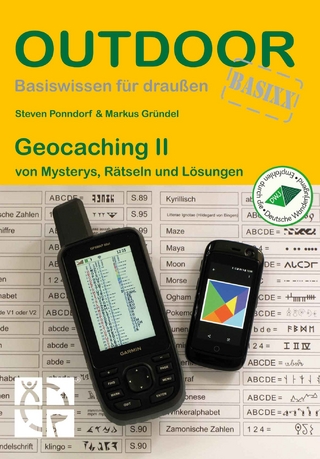
Global Positioning Systems, Inertial Navigation, and Integration
Wiley-Blackwell (Verlag)
978-0-470-04190-1 (ISBN)
- Titel ist leider vergriffen;
keine Neuauflage - Artikel merken
An updated guide to GNSS and INS, and solutions to real-world GPS/INS problems with Kalman filtering Written by recognized authorities in the field, this second edition of a landmark work provides engineers, computer scientists, and others with a working familiarity with the theory and contemporary applications of Global Navigation Satellite Systems (GNSS), Inertial Navigational Systems (INS), and Kalman filters. Throughout, the focus is on solving real-world problems, with an emphasis on the effective use of state-of-the-art integration techniques for those systems, especially the application of Kalman filtering. To that end, the authors explore the various subtleties, common failures, and inherent limitations of the theory as it applies to real-world situations, and provide numerous detailed application examples and practice problems, including GNSS-aided INS, modeling of gyros and accelerometers, and SBAS and GBAS. Drawing upon their many years of experience with GNSS, INS, and the Kalman filter, the authors present numerous design and implementation techniques not found in other professional references.
This Second Edition has been updated to include: * GNSS signal integrity with SBAS * Mitigation of multipath, including results * Ionospheric delay estimation with Kalman filters * New MATLAB programs for satellite position determination using almanac and ephemeris data and ionospheric delay calculations from single and dual frequency data * New algorithms for GEO with L1 /L5 frequencies and clock steering * Implementation of mechanization equations in numerically stable algorithms To enhance comprehension of the subjects covered, the authors have included software in MATLAB, demonstrating the working of the GNSS, INS, and filter algorithms. In addition to showing the Kalman filter in action, the software also demonstrates various practical aspects of finite word length arithmetic and the need for alternative algorithms to preserve result accuracy.
MOHINDER S. GREWAL, PhD, PE, is Professor of Electrical Engineering in theCollege of Engineering and Computer Science at California State University, Fullerton. LAWRENCE R. WEILL, PhD, is Professor Emeritus of Applied Mathematics in the College of Mathematics and Natural Sciences at California State University, Fullerton. ANGUS P. ANDREWS, PhD, is Senior Scientist (Retired) at the Rockwell Science Center in Thousand Oaks, California.
Preface. Acknowledgments. Dedication. Acronyms. 1 Introduction. 1.1 GNSS/INS Integration Overview. 1.2 GNSS Overview. 1.3 Differential and Augmented GPS. 1.4 Space-Based Augmentation Systems (SBASs). 1.5 Applications. 2 Fundamentals of Satellite and Inertial Navigation. 2.1 Navigation Systems Considered. 2.2 Fundamentals of Inertial Navigation. 2.3 Satellite Navigation. 2.4 Time and GPS. 2.5 Example GPS Calculations with no Errors. 3 Signal Characteristics and Information Extraction. 3.1 Mathematical Signal Waveform Models. 3.2 GPS Signal Components, Purposes, and Properties. 3.3 Signal Power Levels. 3.4 Signal Acquisition and Tracking. 3.5 Extraction of Information for Navigation Solution. 3.6 Theoretical Considerations in Pseudorange and Frequency Estimation. 3.7 Modernization of GPS. 4 Receiver and Antenna Design. 4.1 Receiver Architecture. 4.2 Receiver Design Choices. 4.3 High-Sensitivity-Assisted GPS Systems (Indoor Positioning). 4.4 Antenna Design. 5 Global Navigation Satellite System Data Errors. 5.1 Selective Availability Errors. 5.2 Ionospheric Propagation Errors. 5.3 Tropospheric Propagation Errors. 5.4 The Multipath Problem. 5.5 How Multipath Causes Ranging Errors. 5.6 Methods of Multipath Mitigation. 5.7 Theoretical Limits for Multipath Mitigation. 5.8 Ephemeris Data Errors. 5.9 Onboard Clock Errors. 5.10 Receiver Clock Errors. 5.11 Error Budgets. 5.12 Differential GNSS. 5.13 GPS Precise Point Positioning Services and Products. 6 Differential GNSS. 6.1 Introduction. 6.2 Descriptions of LADGPS, WADGPS, and SBAS. 6.3 Ground-Based Augmentation System (GBAS). 6.4 GEO Uplink Subsystem (GUS). 6.5 GUS Clock Steering Algorithms. 6.6 GEO with L1/L5 Signals. 6.7 New GUS Clock Steering Algorithm. 6.8 GEO Orbit Determination. 7 GNSS and GEO Signal Integrity. 7.1 Receiver Autonomous Integrity Monitoring (RAIM). 7.2 SBAS and GBAS Integrity Design. 7.3 SBAS example. 7.4 Conclusions. 7.5 GPS Integrity Channel (GIC). 8 Kalman Filtering. 8.1 Introduction. 8.2 Kalman Gain. 8.3 Prediction. 8.4 Summary of Kalman Filter Equations. 8.5 Accommodating Time-Correlated Noise. 8.6 Nonlinear and Adaptive Implementations. 8.7 Kalman-Bucy Filter. 8.8 GPS Receiver Examples. 8.9 Other Kalman Filter Improvements. 9 Inertial Navigation Systems. 9.1 Inertial Sensor Technologies. 9.2 Inertial Systems Technologies. 9.3 Inertial Sensor Models. 9.4 System Implementation Models. 9.5 System-Level Error Models. 10 GNSS/INS Integration. 10.1 Background. 10.2 Effects of Host Vehicle Dynamics. 10.3 Loosely Coupled Integration. 10.4 Tightly Coupled Integration. 10.5 Future Developments. Appendix A: Software. A.1 Software Sources. A.2 Software for Chapter 3. A.3 Software for Chapter 5. A.4 Software for Chapter 8. A.5 Software for Chapter 9. A.6 Software for Chapter 10. Appendix B: Vectors and Matrices. B.1 Scalars. B.2 Vectors. B.3 Matrices. B.4 Matrix Operations. B.5 Block Matrix Formulas. B.6 Functions of Square Matrices. B.7 Norms. B.8 Factorizations and Decompositions. B.9 Quadratic Forms. B.10 Derivatives of Matrices. Appendix C: Coordinate Transformations. C.1 Notation. C.2 Inertial Reference Directions. C.3 Coordinate Systems. C.4 Coordinate Transformation Models. References. Index.
| Erscheint lt. Verlag | 16.2.2007 |
|---|---|
| Zusatzinfo | Illustrations |
| Verlagsort | Hoboken |
| Sprache | englisch |
| Maße | 161 x 240 mm |
| Gewicht | 934 g |
| Einbandart | gebunden |
| Themenwelt | Naturwissenschaften ► Geowissenschaften ► Geografie / Kartografie |
| Technik ► Elektrotechnik / Energietechnik | |
| Technik ► Fahrzeugbau / Schiffbau | |
| ISBN-10 | 0-470-04190-0 / 0470041900 |
| ISBN-13 | 978-0-470-04190-1 / 9780470041901 |
| Zustand | Neuware |
| Haben Sie eine Frage zum Produkt? |
aus dem Bereich


